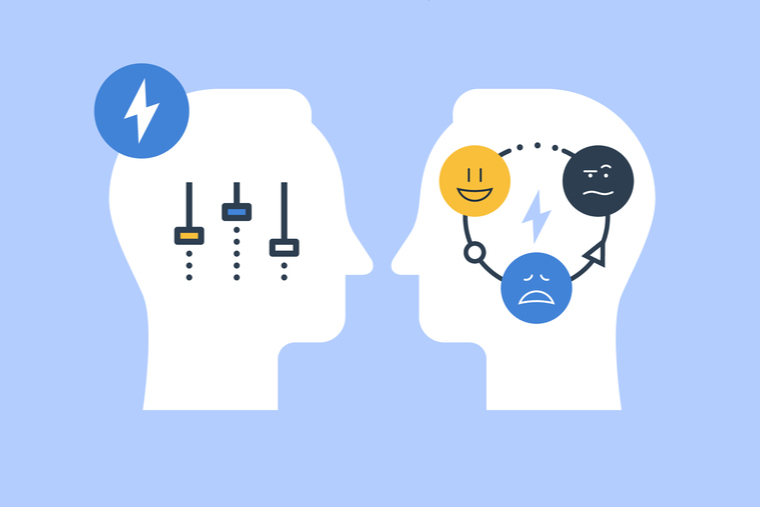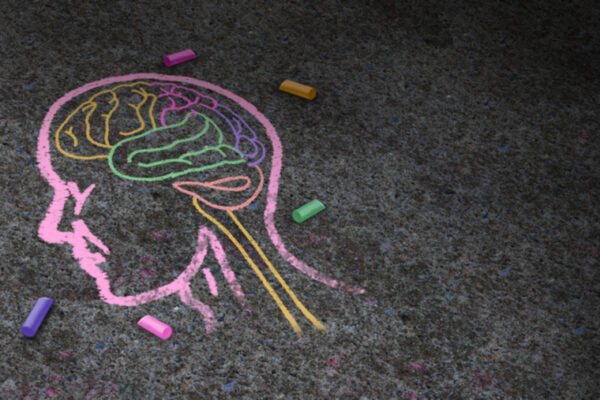Are you able to start a task and stick with it, all the way through, ignoring the temptations of the internet or the sudden realization that you should probably do the laundry?
Or maybe you should be doing something else right this moment?
The faculty that allows people to make plans or goals, and carry them out without losing focus, is called cognitive control. Healthy individuals vary substantially in their ability to utilize cognitive control, and many neuropsychiatric disorders have been linked to cognitive control problems.
But there’s quite a bit that researchers still don’t know: exactly how and why does cognitive control vary from person to person? Which areas of the brain are involved? How does brain activity relate to behavior?

Todd Braver, professor of psychological and brain sciences in Arts & Sciences, along with appointments in radiology and neuroscience at the School of Medicine, at Washington University in St. Louis, is working to answer those questions. He and his research team believe they have developed a more robust research method, and they recently published the first of what promises to be many studies examining the brain basis of cognitive control both in individuals and across groups.
Their initial findings were published online Aug. 19 for the September issue of the Journal of Cognitive Neuroscience.
When it comes to researching cognitive control, a typical study involves looking at how the subjects tackle one or two laboratory tasks. The results are then generalized to apply to the larger question researchers are interested in.
“We all kind of know it’s not the most valid approach,” Braver said. That’s because the cognitive control necessary to perform one task under one circumstance may not be indicative of different types of tasks under different circumstances. “But because of its simplicity, that’s how the field standardly tackles these types of research questions.”
To try to obtain more generalizable results, Braver devised a research framework which not only uses a full battery of cognitive tests, but also looks at them across a variety of conditions.
“We’re looking across a set of tasks, and then also trying to see how each person performs when encouraged to use different modes of control,” he said. Each person performed four tasks across three different conditions while being monitored with functional MRI. Functional MRI measures changes in blood flow across the whole brain to identify the areas that were most impacted by the tests.
Braver found the differences in cognitive control seemed to be differences of degree — common patterns were found in both the brains and the behavior of most of the 80 subjects.
“We found consistency across the four tasks in these brain regions,” Braver said, “but people varied in degree.” Most importantly, and as expected, the changes in brain activity were mirrored by changes in task performance levels: the participants varied in the way they engaged their cognitive control. Together, these findings suggest to the research team that the results are more generalizable.
“That’s what we care about,” he said, “because we think that effective utilization of cognitive control should more generally result in enhanced performance.”
The four tests are psychology standards: a Stroop task; an AX-CPT task; a Cued-TS paradigm; and a Sternberg task.
All four tasks were performed under three conditions. The baseline condition was akin to a pop quiz; participants did not know when cognitive control demands would occur. There was a proactive condition, in which participants knew in advance that their cognitive control would be necessary for the task, and could prepare accordingly.
Finally, in the reactive condition, participants did not know in advance about the control demands, but were clued in quickly on certain types of trials by the features that were present.
“It’s like when you see a stop sign,” Braver said. You don’t know before you see it that you need to stop, but as soon as you detect the red color or octagon shape, you begin slowing down.
Imaging showed that participants’ brains were in distinct states in each of the three conditions, indicating that there is a qualitative difference when it comes to engaging cognitive control in different situations.
Those who dealt better with the tasks, across any of the conditions, also showed the most consistent signature in brain activity. But regardless of people’s performance, brain states clustered around similar activity patterns.
This research is the beginning of what Braver hopes will be a robust understanding, first, of the workings of a healthy brain.
“I don’t think it’s smart to start studying clinical populations without first having an understanding of how cognitive control functions in healthy brains,” he said. “We know that cognitive control shows some of the biggest variations even among the healthy, so we wanted to develop a basic level of understanding in healthy young adults before we branch out.”
Nevertheless, Braver and his research team have broad ambitions for this work, with some of the data already made publicly available, so that researchers working in related areas can begin to make use of it. Additional planned studies will expand the focus to understand the genetic basis of cognitive control in identical twins; whether mindfulness training can improve cognitive control function; and the relationship between anxiety and cognitive control.
“We believe that our work and data already provide a valuable resource to the scientific community,” Braver said. “And we are hoping that both our team and others can build on this foundation, in order to understand, more fully, why cognitive control is so important, but also so variable, among people.”
To learn more about the project, or gain access to available data, visit sites.wustl.edu/dualmechanisms/.



